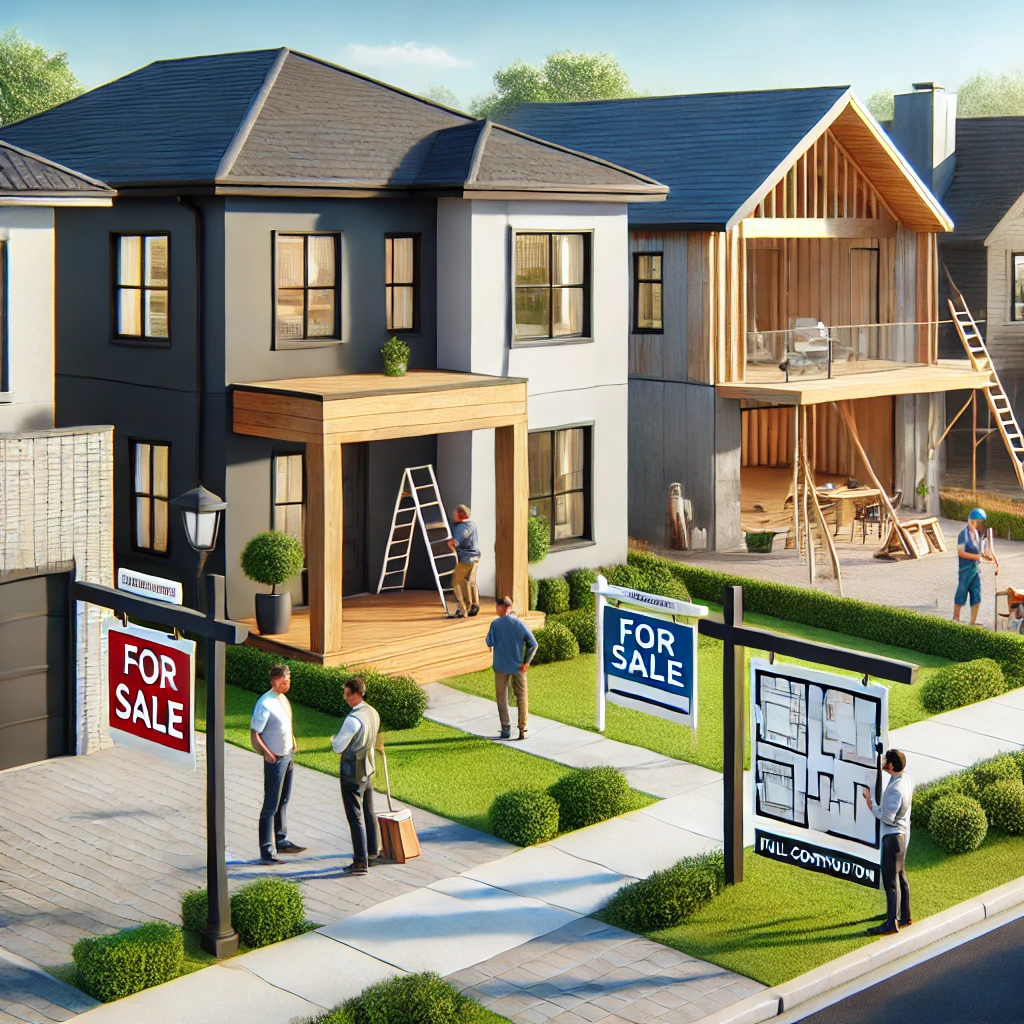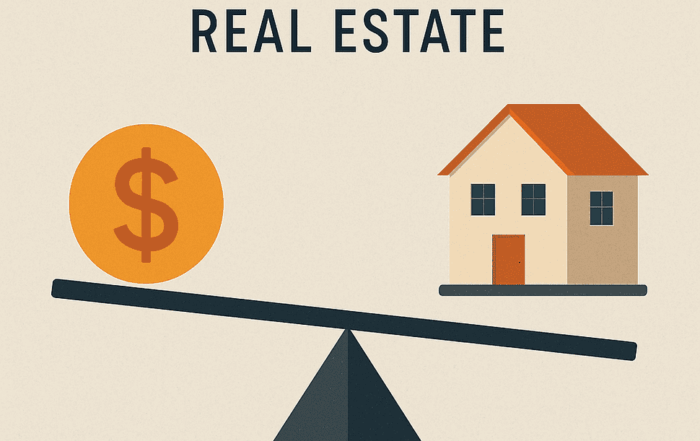Is New Construction the Right Way to Go When You Can’t Find the ‘Perfect’ Home?
Finding an existing home can be frustrating—especially when that “perfect” home slips away just before you make an offer. If you’ve been hunting for a home and keep coming up short, you’re not alone. According to Zillow, homes are selling faster than ever. In 2020, homes spent an average of 25 days on the market before going under contract, five days quicker than in 2019. Fast-forward to 2025, and the competition remains fierce, with limited inventory pushing homebuyers to consider alternative solutions, such as new construction homes.
New construction homes offer something unique: the ability to tailor a home to your needs. Whether it’s choosing the perfect kitchen layout, upgrading to energy-efficient appliances, or ensuring your home office is designed for productivity, new construction can provide opportunities that existing homes simply can’t. But before jumping into a brand-new build, it’s crucial to understand the different types of new construction and what they mean for your home-buying journey.
The Different Types of New Construction Homes
Not all new construction homes are created equal. There are three main types:
-
Spec Homes – These are move-in-ready homes built on speculation by developers who anticipate buyers will like the design and purchase them. They are generally the most affordable and require no wait time.
-
Semi-Custom Homes – Buyers select a pre-designed floor plan from a builder and make minor adjustments, such as choosing finishes or slightly modifying layouts.
-
Full Custom Homes – Buyers work with architects and builders to design a home from scratch. This is the most expensive and time-consuming option but offers complete control over the final product.
Each option has its pros and cons, so let’s break them down further.
Spec Homes: Quick, Affordable, and Move-In Ready
If you need to move quickly or are looking for a well-priced home without the stress of designing one, a spec home might be the right fit. Builders construct these homes based on popular trends and layouts, hoping buyers will be drawn to them once completed.
Pros of Spec Homes:
-
Move-in ready – No waiting for construction; you can buy and move in immediately.
-
Cost-efficient – Prices are typically lower than custom builds because builders buy materials in bulk and streamline the process.
-
Minimal decision-making – You won’t have to stress over choosing every detail like cabinet styles, flooring, or paint colors.
Cons of Spec Homes:
-
Limited customization – Since the home is already built or near completion, you may have little to no say in design choices.
-
Generic layouts – Spec homes cater to general market demand, so the floor plans may not align perfectly with your lifestyle.
-
Potential for competition – Because spec homes are move-in ready, multiple buyers may bid on the same property, driving up the price.
Semi-Custom Homes: The Middle Ground
For buyers who want more personalization but don’t want to start from scratch, semi-custom homes offer a good compromise. With this option, you choose from a builder’s pre-designed floor plans but can modify certain aspects, such as adding an extra bedroom, selecting flooring, or adjusting the layout.
Pros of Semi-Custom Homes:
-
Some flexibility – You can tweak the design to better suit your lifestyle without the hassle of a full custom build.
-
Faster than a custom home – While you still need to wait for construction, it’s significantly faster than designing a house from the ground up.
-
Predictable pricing – Costs are more controlled since you’re selecting from pre-designed plans rather than hiring an architect to create something from scratch.
Cons of Semi-Custom Homes:
-
Limited options – Major structural changes may not be possible, and builders may restrict modifications to pre-approved choices.
-
Requires patience – Unlike spec homes, you’ll need to wait for construction to finish before moving in.
-
May require a builder’s lot – Some builders only offer semi-custom homes in specific neighborhoods, limiting your choices on location.
Full Custom Homes: The Ultimate Dream Home
If you want complete control over your home’s design, a full custom home is the way to go. From the number of bedrooms to the materials used, every detail is up to you. However, this level of customization requires significant time, effort, and financial investment.
Pros of Full Custom Homes:
-
Total personalization – You have complete creative freedom to design a home that fits your lifestyle perfectly.
-
Premium quality – You can select high-end materials, energy-efficient options, and smart home technology tailored to your preferences.
-
Long-term satisfaction – Because everything is built to your specifications, you’re less likely to outgrow the home or feel the need for renovations later.
Cons of Full Custom Homes:
-
Expensive – Custom builds often cost significantly more than other types of new construction.
-
Long timeline – The process can take a year or more, depending on the complexity of the design.
-
Unforeseen challenges – Weather delays, material shortages, and unexpected construction issues can add stress and extend the timeline.
New Construction vs. Existing Homes: Which One is Right for You?
While new construction offers personalization, existing homes come with their own advantages, such as established neighborhoods, mature landscaping, and lower costs. Here’s a quick comparison to help you decide:
| Feature |
New Construction Homes |
Existing Homes |
| Customization |
High (especially full custom) |
Limited to renovations |
| Move-in Speed |
Varies (immediate for spec, months for custom) |
Immediate |
| Cost |
Higher upfront, fewer repairs needed |
Lower upfront, but may require updates |
| Location Choices |
Often in new developments |
Wider selection in established areas |
| Maintenance |
Minimal, everything is new |
Possible repairs and updates needed |
| Energy Efficiency |
High, with modern appliances and insulation |
Varies; may need upgrades |
How a Realtor Can Help You Navigate New Construction
Many buyers assume they don’t need a real estate agent when buying a new construction home since they’re dealing directly with a builder. However, a Realtor can be an invaluable resource to ensure you get the best deal and avoid pitfalls.
Benefits of Working With a Realtor for New Construction:
-
Negotiation power – Builders often have set prices, but a Realtor can help you negotiate incentives like free upgrades, closing cost assistance, or extended warranties.
-
Understanding contracts – Builder contracts can be complex and favor the developer. A Realtor can review the terms and make sure you’re protected.
-
Knowledge of market trends – Your agent will provide insight into whether new construction is a good investment in your chosen area.
-
Helping with inspections – Even new homes can have issues. A Realtor will ensure you get proper inspections and a final walkthrough before closing.
Final Thoughts: Is New Construction Right for You?
If you’re struggling to find the perfect home in today’s competitive market, new construction might be the best way to get what you want without making compromises. Whether you choose a spec home for quick move-in, a semi-custom home for some flexibility, or a full custom home for the ultimate dream house, there’s an option to fit every buyer’s needs.
However, new construction isn’t without its challenges. The key is understanding the process, setting realistic expectations, and working with professionals who can guide you every step of the way.
Are you considering a new construction home? Let’s connect and explore your best options!
Written by CEO of Graystone & companies & Coach of the Property Profit Academy
propertyprofitacademy.com











